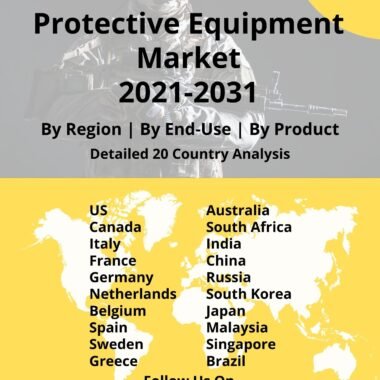Description
Global Ammunition Market
Frequently Asked Questions of Ammunition Market
Ammunition is the material that is fired, scattered, dropped, or detonated from any weapon. In technical terms, ammunition market report is the material that is fired, and ammunition contains the bullet as well as many other materials such as cartridge case. The ammunition is completely composed of cartridge cases. The propellant, primer, and bullet are all included in the ammunition market trends. All of these elements add up to make ammo. Which is the substance that is fired, spread, dropped, or detonated from any weapon, including any type of firearm, is an example of ammunition. Grenades and missiles also, because these are items that can be fired, dropped, or exploded, are examples of ammunition.
The term “smokeless powder” implies that it will not emit any type of smoke. Nitroglycerine and nitrocellulose are the primary components of smokeless powder. Nitrocellulose is also known as gun cotton. The smokeless powder comes in two varieties: single base and double base. The single base smokeless powder contains only nitrocellulose, while double base smokeless powder contains nitrocellulose as well as nitroglycerine. Also, nitrocellulose is either used alone or in combination with nitroglycerin to make propellant; the latter is known as a double-based powder because two chemical substances are employed.
The second classification is semi-smokeless powder Semi-smokeless powder produces smoke but not as much as gunpowder or even as little as a smokeless powder because it is a mixture of black powder and nitrocellulose. The proportion is that there is nitrated wood cellulose or nitrocellulose in the proportion 20% in the percentage 20% then potassium nitrate is 60% carbon is 12% and sulfur is 8% so semi-smokeless powder is like a hybrid of smokeless powder and the gun power. The primer is the chemical or technology that initiates the combustion that propels the projectile out of the rifle barrel. The United States Department of Defense developed green ammo to reduce the use of hazardous ingredients in the manufacture of small weapons ammunition. Heavy metals, volatile organic compounds, and ozone-depleting substances are all prohibited in green ammunition primers and projectiles. In production facilities, these materials generate hazardous waste and pollutants. Disposal of unused conventional ammunition is particularly difficult and costly due to the health risks it poses.
Major factors driving Ammunition Market Growth
Procurement of newer firearms will drive be one of the key market trends that will drive the growth of the ammunition market growth. Nations around the world are replacing their older rifles with new ones, The US Army recently stated that the Next Generation Squad Weapon, the XM5 rifle, and the XM250 light machine gun, will replace the M4/M16 rifle and the 249 light machine gun, with some Soldiers receiving the weapons in the fourth quarter of 2023.
Trends influencing the Ammunition Market Size
The weight of carrying ammunition can be taxing. All of that brass and pellets are quite weighty. This has a wide range of implications, including transportation costs, the ease with which it can be distributed to people in need, and, of course, the infrastructure required for stowage. While several types of equipment contribute to a soldier’s overall weight, ammunition is a common denominator across the services.
The cartridge case accounts for the majority of the round. A lightweight case decreases a soldier’s weight burden. For example, a soldier carrying 300 rounds would gain from a 0.54 kg weight savings, alleviating their burden or allowing them to carry 50 more rounds for the same weight. Lightweight cases can reduce soldier fatigue and also reduce transportation costs. This is one of the key market trends that will influence the growth of the market.
Ammunition Market Forecast & Dynamics
Increasing defense spending will drive the market. New procurement activities and upgrades to existing weapons with newer capabilities are increasing. The increase in defense spending will encourage the procurement of arms and ammunition. Procurement will also be driven by prevailing geo-political conditions in Europe and the Asia Pacific. The ammunition market forecast includes a comprehensive market analysis and market size. The market analysis includes regional market size, drivers, restraints, and opportunities. The regional analysis also includes country-wise market size.
Ammunition Market Analysis for Recent Developments
Amid a global hunt for new sources of armaments to transfer to Ukraine, South Korea, among others, has been hesitant to give lethal help to Ukraine for fear of being embroiled in the fight. South Korea said it would send thousands of artillery shells to the United States, but only if the equipment was utilized by US soldiers and not dispatched to help Ukraine fight Russia. During a global hunt for new sources of armaments to transfer to Ukraine, South Korea, among others, has been hesitant to give lethal help to Ukraine for fear of being embroiled in the fight.
Eva Hoegl, a defense oversight official of the German parliament, has criticized the government’s “lack of action” to adequately equip members of the military, calling it “unacceptable”. Germany needs at least $20.5b to restore its “depleted” military ammunition, a top defense oversight official warned, adding that the absence of prompt action to fully equip its military forces is “unacceptable”. It had spent 1.3 percent of its GDP on defense as of 2021. In 1990, the country’s military spending was around 3% of the GDP. However, in response to Russia’s annexation of Crimea in 2014 and the Ukraine war that began in February of this year, Germany felt the need to enhance its defense capabilities.
The Finnish government has said that it will treble the nation’s output of artillery and mortar ammunition by investing more than $130 million over the course of the next three to four years. Plans call for covering “”heavy ammunition,”” which includes 120mm and 81mm mortar rounds in addition to 155mm artillery munitions. One of the few significant ammunition makers in Europe, the Norwegian-Finnish Nammo firm, is anticipated to be the main beneficiary of the ramp-up. It was announced in April that Nammo intended to boost manufacturing to 200,000 artillery shells annually by 2028. In what is expected to be its largest procurement to date, the state of Estonia is evaluating the capabilities of European munitions producers. For €280 million. The state aims for speedier delivery times than this, even if production lines are already facing wait times of up to two years. Everything will be revealed in less than a month, though. All year long, preparations have been underway for the purchase, which mainly focuses on artillery rounds and cutting-edge anti-armor missiles. The Center for Defense Investments (RKK) stated as early as last winter that Estonia intends to purchase large-caliber ammunition worth half a billion euros over the course of the next seven years. To all bidders who indicated interest in participating in the tender, the state has extended an offer of framework contracts. This half-billion-euro framework contract is scheduled to be used up to €110 million for arming the primary autocannon of the Combat Vehicle 90 (CV90) infantry fighting vehicles (see picture). The highest amount, €370 million, will be spent on 155mm artillery rounds, with up to €20 million going toward Type 69 RPG ammunition.
Key Companies







